Small business owners are drowning in rules they don’t understand.
A 2024 National Small Business Association survey found that business owners spend an average of 21 hours each week dealing with regulatory compliance issues. That’s over half of a standard workweek lost to paperwork and procedures.
What if there was a way to cut that time in half?
Regulatory compliance isn’t just about avoiding fines or legal troubles. It’s about creating a foundation for sustainable growth in an increasingly complex business environment. The businesses that thrive in 2025 won’t be the ones that reluctantly follow rules—they’ll be the ones that transform compliance from a burden into a competitive advantage.
The most successful businesses didn’t just comply; they mastered the regulatory oversight landscape. They turned what others saw as obstacles into stepping stones.
This guide walks you through practical steps to not just survive but excel in the 2025 regulatory oversight environment. We’ll cover proven strategies for staying updated with changing regulations, training your team effectively, and using technology to simplify compliance tasks.
Effective Regulatory Oversight Strategies for Local Business Compliance in 2025
-
Stay informed on changes and updates to stay compliant.
-
Train staff regularly to ensure everyone knows the rules.
-
Keep documentation organized and accessible.
Stay Updated with Regulatory Oversight Changes
In 2025, regulatory oversight landscapes are ever-changing. Following official channels and subscribing to newsletters from regulatory bodies is critical. They provide timely information and detailed updates that can impact operations. Regularly reviewing updates ensures awareness of shifts that could affect your business, such as changes to tax policies, which may significantly impact businesses, including the potential expiration of provisions from the 2017 Tax Cuts and Jobs Act.
Implement Comprehensive Training
Training isn’t just a routine—it’s a cornerstone of compliance strategy. Regular training sessions ensure that staff remain informed about new compliance requirements. Using a mix of traditional and online courses gives flexibility and better engagement.
Conducting effective training involves understanding compliance terms and procedures clearly. A practical book to consider is “The Compliance Handbook” by Thomas Fox. It delves into best practices and provides recommendations for building a compliance program, helping employees at all levels understand and apply necessary rules effectively.
Mobile-first and gamified training platforms ensure compliance are gaining ground, making compliance learning engaging and interactive. These platforms, with increasing popularity, present rules in digestible formats, boosting participation and retention significantly. Training appropriately minimizes the chances of unintentional breaches and supports a compliance-focused culture.
Maintain Clear Documentation
Documentation is vital for staying compliant. Keeping meticulous records of compliance-related activities is paramount. Businesses use digital tools to organize paperwork more efficiently, reducing the risk of misplaced documents. Tools like SharePoint or Google Workspace are handy for storing and categorizing documents, making it easier for audits.
Aside from digital tools, integrating a culture of transparency and continuous documentation helps streamline processes. By doing so, businesses can quickly answer compliance inquiries. Ensuring that all documents meet industry standards protects against potential fines and legal issues.
The choice to maintain paperless records appeals to businesses not just for efficiency but sustainability, further aligning with broader eco-friendly practices now often mandated across sectors. Keeping up with changes in documentation requirements helps maintain operations smoothly, especially when faced with new regulations or shifts in enforcement trends.
Conduct Regular Compliance Audits For Financial Stability
Audits identify gaps and weaknesses in compliance efforts. Performing regular audits involves reviewing if the business processes align with current regulations. Outsourcing audits to specialists may provide fresh insights while saving internal resources. Regular audits help minimize 47% of small businesses’ concerns over time spent fulfilling compliance obligations.
Besides regular external audits, conducting internal audits fosters a proactive compliance culture—catching issues before they escalate. Understanding this balance between the importance of internal and external review helps ensure robust compliance frameworks.
Embrace Technology for Compliance Monitoring
Digital tools and AI enhance compliance monitoring. Such technologies streamline tasks like reporting and record-keeping. AI improves accuracy, reducing the chance of human error.
In 2025, AI-powered software will facilitate real-time compliance checks. Experts forecast a growing trend of AI and automation in compliance management. Platforms analyze vast data sets instantly, offering an extra layer of protection against regulatory breaches.
Implementing compliance-enhancing technology requires understanding internal workflows and existing gaps. “Implementing Enterprise Risk Management” by John Fraser and Betty Simkins explores the integration of solutions that amplify the effectiveness of compliance processes. While not a technology guide, it lays the framework for embedding technology aligned with compliance goals. This holistic approach suits businesses aiming to blend regulatory oversight adherence with operational efficiency.
By following these effective regulatory oversight strategies, businesses can align operations with regulatory requirements, ensuring robust control and compliance while supporting growth.

Boost customer satisfaction by 27% with delivery updates
Metrobi sends ETA alerts, live tracking, and collects feedback from your customers—automatically.
Navigating Compliance Challenges for Small Businesses
-
Compliance Basics: Key terms, principles, and why they matter.
-
Common Hurdles: Issues faced by small businesses and solutions.
-
Tech in Compliance: How technology eases the compliance process.
Understanding Core Compliance Obligations and Concepts
Compliance and Oversight
Regulatory oversight compliance refers to following guidelines set by governing bodies. These regulatory oversight rules are often specific to industries and regions. Compliance oversight ensures businesses act within these laws. This might include safety regulations, data protection laws, or trade rules. Different sectors face unique regulations, making it crucial for business owners to know the ones that apply to them. Though often seen as a burden, compliance can secure a business’s reputation and avoid hefty fines or legal actions.
For Small Businesses
Small businesses struggle with compliance due to limited resources. In a survey, 51% of small firms said compliance requirements stunt their growth. Navigating these regulations without in-house legal teams can be tough. Even so, awareness and understanding remain essential in maintaining operational stability and promoting customer trust. Firms that prioritize compliance build a solid reputation and align
Identifying Common Challenges to Regulatory Oversight
Frequent Compliance Issues
Non-compliance is expensive. Small businesses lose an average of $10,000 yearly due to HR rule violations. Also, smaller firms often pay more per employee for compliance than bigger competitors. Despite this, only 53% of small companies offer diversity and harassment training. These gaps aren’t merely financial—they risk legal challenges and harm employee morale.
Solving Compliance Challenges
Regular training is crucial. Simplifying and updating training programs can make them more effective. Consider offering both online and in-person sessions to suit different learning styles. Outsourcing to compliance experts or hiring temporary consultants can provide expertise without the cost of a full-time hire.
Myths and Misconceptions
Some believe only large firms need to worry about compliance. This isn’t true. Regulations affect businesses regardless of size. Others think once-a-year training suffices. Compliance demands constant updates and check-ins to navigate changes.
Leveraging Technology for Easier Compliance
Tech Tools for Compliance
Technology can automate manual compliance tasks, significantly reducing errors. Sixty-one percent of small to medium-sized businesses (SMBs) already harness AI for this purpose. Software platforms offer solutions like document automation, compliance tracking, and real-time alerts on regulatory oversight changes. By reducing human error, businesses not only save time but also money. Recent data highlighted that 39% of small businesses increased their resource allocation for compliance in the past six months, showcasing the need for efficiency.
Benefits of Automated Compliance
Automation tackles repetitive office tasks, lowering the chance of mistakes. Platforms can also offer a centralized system for compliance documentation. This ensures every team member has access to the most current information. Additionally, quick access to updates means businesses can adapt sooner, keeping them ahead of any regulatory shifts.
Adapting to Regulatory Oversight Changes in 2025
-
Recognize shifts in regulations that impact your business.
-
Prioritize compliance to avoid disruptions and maintain trust.
-
Implement proactive strategies and tools for smooth adaptation.
Key Regulatory Oversight Changes to Anticipate
Regulations in 2025 are expected to undergo significant shifts, especially in areas related to data privacy, environmental standards, and digital taxation. The introduction of stringent data protection laws is likely, with privacy concerns continuing to lead to regulatory updates globally. Businesses might see tighter rules on how data is collected, stored, and shared, pushing them to revise existing data management practices.
Environmental regulations are also poised for change. Expect more rigorous requirements to reduce carbon footprints and promote sustainability. With the world focusing on climate change, businesses and consumers will need to align themselves with global environmental goals. Similarly, digital taxation is gaining traction due to the rapid growth of digital commerce and services. Countries are implementing taxes on digital goods sold across borders, compelling businesses to re-evaluate their pricing and reporting mechanisms.
Proactive Steps to Take Now
Businesses should start by reviewing current compliance procedures. This involves a comprehensive audit of all existing policies and practices to ensure they align with the anticipated changes in regulations. It’s essential to collaborate with legal experts to identify potential gaps in compliance. Early detection and rectification of these gaps can prevent costly penalties and disruptions.
Preparing for audits and inspections is crucial. Firms can introduce mock audits to test their preparedness. This practice helps identify areas needing improvement, thereby streamlining operations for actual inspections. Encouraging ongoing staff training on compliance matters ensures that everyone in the organization understands their role in maintaining regulatory standards.
Tools and Metrics for Measuring Compliance
To measure compliance effectively, businesses should invest in comprehensive compliance management tools. These tools can automate monitoring and reporting processes, ensuring that all activities meet regulatory standards and cause financial stability. Metrics such as compliance rate and adherence to specific KPIs should be closely tracked. Compliance rate can be determined by the percentage of successful audits against total audits.
Analytics tools can help in identifying trends and patterns in compliance data, thus facilitating informed decision-making. Introducing metrics like the number of compliance violations detected and corrected can gauge performance.
By continuously measuring and refining compliance strategies, businesses can maintain robust regulatory adherence, ensuring they remain competitive and avoid potential pitfalls as regulations evolve. These proactive measures will align organizations with and address the ever-changing regulatory environment, fostering resilience and financial stability.
The Future of Regulatory Oversight: Preparing for What’s Next
-
Understand upcoming trends in regulatory oversight.
-
Learn how to plan for lasting compliance.
-
Build resilience against change.
Predictions for the Future of Regulatory Oversight
Regulatory oversight is evolving. Busy professionals should look into several upcoming trends. There’s a big push toward environmental, Social, and Governance (ESG) compliance. Regulators are getting stricter with financial products, keeping an eye out for hidden fees. Watch out for regulatory oversight in Buy Now, Pay Later (BNPL) services. Regulators want to make sure AI doesn’t have bias. Expect global regulations to be similar, focusing on operational resilience.
Regulatory oversight is increasing in major areas. Digital assets, such as cryptocurrency, will see more rules. AI and machine learning in finance will get more attention. Data privacy is big, especially with new technologies. To keep up with these changes, stay informed and adjust business practices accordingly.
Global Standardization and AI Monitoring
Look for more countries setting the same standards for rules. By 2025, this means having similar requirements, no matter where the business is. It helps create even competition globally and ensures everyone follows the same rules.
AI and machine learning input and output might end regulators and might require proof that AI does not choose based on race, gender, or other unfair factors. Businesses will need to prove their AI is fair. Busy professionals should prepare their company with documents and systems to handle this.
Strategic Planning for Long-Term Compliance in Financial Markets
Creating a solid compliance plan is critical. A roadmap prepares a business for future needs. Here’s a step-by-step guide:
-
Conduct Risk Assessments
-
Examine all potential risks related to compliance.
-
Rank each risk: place them in order of how bad they could be.
-
-
Develop a Custom Compliance Framework
-
Consider your industry and business goals.
-
Build a framework tailored to your company.
-
-
Establish Compliance KPIs
-
Use KPIs like compliance audits completed, identified non-compliance events, and corrective actions taken.
-
Track these to check your business’s compliance performance.
-
-
Integrate Compliance in Daily Operations
-
Make sure compliance is part of everyday work.
-
Ensure everyone knows compliance is a key part of their daily tasks.
-
-
Use Technology and Automation Tools
-
Implement tools to streamline processes.
-
Automate repetitive compliance tasks to save time and reduce errors.
-
Building Resilience Against Future Changes and Potential Systemic Risks
Being ready for future changes means being flexible. Follow these steps to create an adaptable compliance strategy:
-
Develop a Culture of Continuous Improvement
-
Encourage open dialogue about compliance improvements.
-
Involve employees in compliance reviews and updates often.
-
-
Implement Monitoring and Reporting Mechanisms
-
Set up systems to track compliance data automatically.
-
Make sure reporting is comprehensive and easy to understand.
-
-
Stay Informed on Legal Changes
-
Regularly review updates on laws and regulations.
-
Adjust company practices as soon as there are changes.
-
-
Build Strong Ties with Regulators
-
Keep in touch with regulators for insights and guidance.
-
Promote open communication to understand expectations.
-
-
Conduct Routine Internal Audits
-
Check the alignment of departments with compliance goals.
-
Identify gaps and fix compliance issues proactively.
-
Effective Regulatory Oversight for Your Financial Stability
Staying on top of regulatory oversight isn’t just about avoiding penalties—it’s about building a business that thrives through stability and trust. As we’ve seen through 2025’s evolving compliance landscape, local businesses and institutions that proactively embrace regulatory changes gain real market edges.
The path forward is clear: stay informed through official channels, invest in comprehensive staff training, and maintain careful documentation. Small businesses facing resource constraints can lean on technology solutions to simplify compliance without breaking the bank.
Remember that compliance isn’t a one-time task but an ongoing commitment. Creating a sustainable compliance strategy—one that can adapt to the changes we expect through 2025 and beyond—will protect your business from disruption and position you for steady growth. For small businesses, understanding the significance of regulatory reporting is key to not only meeting compliance standards but also optimizing operational efficiency. By embracing effective reporting practices, businesses can gain better insights into their performance and make informed decisions. For further information on this essential topic, take a look at our article on the importance of regulatory reporting for small businesses.
The most successful local businesses don’t view regulatory oversight as red tape but as an opportunity to demonstrate their commitment to quality, safety, and ethical practices. By implementing the strategies outlined in this guide, you’re not just meeting requirements—you’re building a foundation for lasting business success. Understanding why regulatory reporting is crucial can greatly enhance your compliance efforts. For detailed insights on this topic, check out our post on the importance of regulatory reporting for small businesses.

























